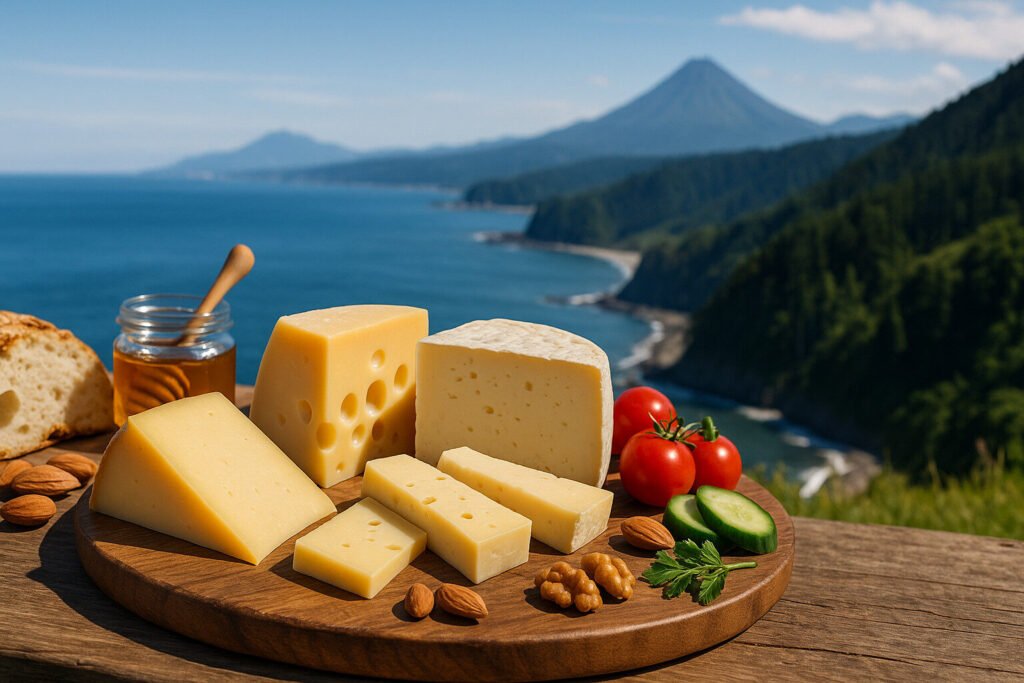Cheese Of South Korea
Cheese Definition and Scope in South Korea
Cheese in South Korea refers to dairy products primarily made from cow’s milk, though some varieties incorporate milk from goats or other animals. The scope includes both domestically produced cheeses and a wide range of imported varieties, reflecting the country’s evolving dairy industry and consumer tastes. This category encompasses fresh, soft, semi-soft, and hard cheeses available in the market.
South Korea’s cheese definition aligns with global standards, focusing on products created through the coagulation of milk proteins. The market scope has expanded significantly to include processed cheese slices, cream cheese, and traditional styles adapted for local preferences. Domestic production now also features artisanal attempts at making mozzarella and cheddar-style cheeses.
Cheese Production in South Korea
South Korean cheese production primarily occurs in modern facilities utilizing pasteurized milk and controlled fermentation processes. Major dairy companies like Namyang and Seoul Milk operate automated plants producing processed cheese and mozzarella for the food service industry. These facilities implement strict hygiene standards and temperature controls throughout the manufacturing process.
Artisanal cheese production remains limited but growing, with small-scale producers experimenting with local milk sources. Production techniques often combine traditional methods with technological adaptations to suit Korea’s climate and distribution needs. The majority of production focuses on cheeses with shorter maturation periods to meet immediate market demand.
Sensory Profile of South Korean Cheeses
Domestically produced cheeses in South Korea typically exhibit mild, creamy flavor profiles with balanced saltiness. Processed cheeses dominate the market, offering consistent texture and melting properties valued in cooking applications. These products generally have smooth, uniform appearances and pliable textures that appeal to local consumers.
Flavor intensity in Korean cheeses tends toward the subtle end of the spectrum, with fewer aggressively pungent or complex varieties. Texture ranges from the soft spreadability of cream cheese to the elastic quality of pizza mozzarella. Color typically remains pale yellow to white, with minimal rind development in most commercial products.
Cheese Uses in South Korean Cuisine
Cheese serves primarily as an ingredient in Korean-Western fusion dishes and baked goods within South Korea. Popular applications include cheese-topped Korean army stew, corn cheese side dishes, and cheese-filled rice cakes. Processed cheese slices frequently appear in sandwiches, burgers, and as toppings for instant noodles.
The food service industry drives significant cheese consumption through pizza chains and bakeries incorporating mozzarella and cream cheese. Home cooking utilizes cheese mainly as a melting component in casseroles and as a filling in various snacks. Cheese powder also sees extensive use as a seasoning for chips and other packaged foods.
Regional Cheese Examples in South Korea
Major dairy regions include Gangwon Province and Chungcheong Province, where most large-scale cheese production facilities operate. Namyang Dairy’s processed cheese products represent the most recognizable domestic cheese brand nationwide. Seoul Milk produces mozzarella and other pizza cheeses supplied to food service establishments across the country.
Emerging regional examples include artisanal attempts from Jeju Island using local milk sources. Some small producers in Gyeonggi Province are experimenting with goat cheese and fresh cheese varieties. While not yet widespread, these regional efforts indicate growing diversity in South Korea’s cheese landscape beyond industrial production.


